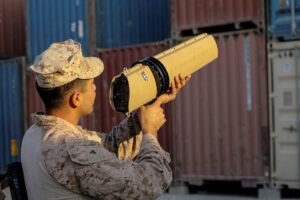
The Department of Defense last week is seeking solutions to counter unmanned systems (UxS) operating in all domains including the ability to counter autonomous swarms of uncrewed systems. Separately, the Department of Homeland Security said that it plans to test solutions beginning this summer that employ kinetic means to defeat unmanned aircraft systems (UAS). So far, the DHS Science and Technology (S&T) Directorate has only evaluated non-kinetic counter-UAS solutions. For the DoD, the Office of the Under Secretary of Defense…

 By
By 








